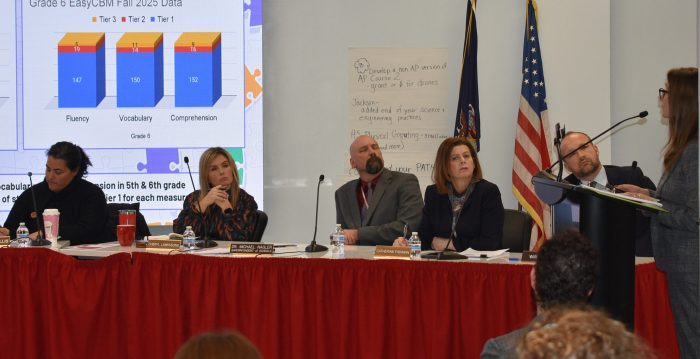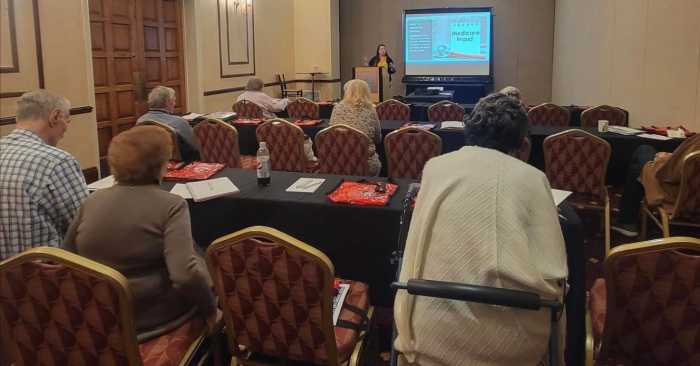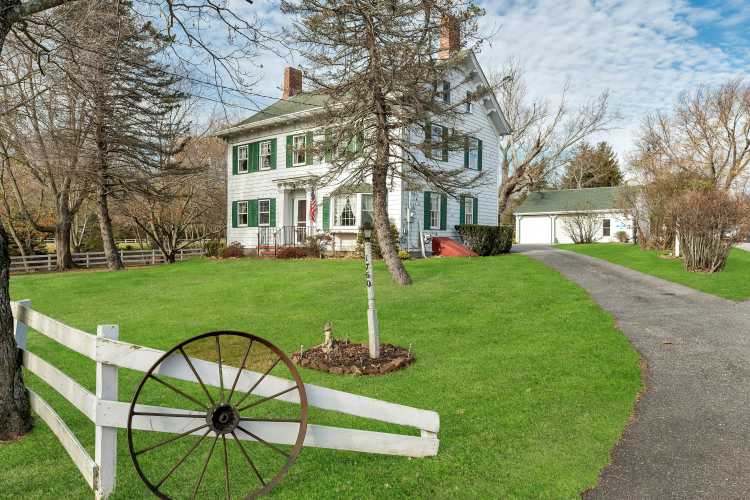
The Village of East Williston held a public hearing for three local laws at its village board meeting on Monday, Oct. 19, which centered around permitting business/professional offices on Sagamore Avenue, driveways and solar panels.
Robert Campagna, the village’s building inspector, presented and summarized each law to the village board—all of which were unanimously approved.
Driveways
The village amended its code pertaining to driveways, which Campagna said went back to the 1980s where it was mandated that driveway width could only be 10 feet wide.
“I’ve been inspector for 20 years now and there have been numerous instances where it’s been a hardship for many residents, especially those who are only on a 60×100 lot and the house is only 25 or 30 feet away from the street,” Campagna said.
Due to residents coming before the village’s board of zoning appeals, some who have children that received their licenses and have nowhere to park as a result of restrictions on parking in the street overnight, Campagna said that board has granted relief because of the driveway shortness, that they can fit their cars along the sidewalk.
A few months ago, Campagna recalled that a resident put out a petition request that the village review the driveway laws and decide how to treat them.
“We’ve discussed this a number of times and I feel from my experience that people will try and do things under the radar and hope I don’t catch it, or there are many pre-existing driveways prior to the 1980s that exceed the 10-foot width,” Campagna said.
Campagna said he took zoning regulations from other areas such as Garden City to devise the local law, which he said is “quite simple.”
Campagna explained that there are two instances, one with a primary residence and a detached garage at the corner of the property in the rear, which would remain at 10-foot width and then widen up to a 20×20 area in front of the two-car garage. In instances where the garage is attached to the home, the village now allows an 18-foot width, which is the width going up to a double garage door so people can park in their driveway.
“It does give relief to a fair amount of people,” Campagna said.
Solar Panel Talk
The local law pertaining to solar panels addresses and provides standards for the erection and installation of solar collection equipment.
“The intent was to aesthetically review the installation of the panels, it was not to limit or restrict anyone from doing it,” Campagna said, who remarked that the demand for solar panels is increasing.
According to Campagna, the village will now require solar panels to be a monochromatic (one color) black or brown—restricting panels with designs on them—and the color of a resident’s roof has to be the color of the panel.
The angle of the panel has to match the angle of the roof as well, so the panel will visually appear to be part of the roof, and all other equipment with the panel is required to be hidden from view, officials sad.
Campagna said the village presently has three pending applications for solar panels—one on Roslyn Road and the others on Sagamore Avenue on the front of the homes facing east.
Regarding solar panels, a concern arose over fire safety measures in firefighters properly maneuvering around roof panels should they need to. East Williston Fire Department 1st Assistant Chief Patrick Theodore said it’s something the department will look into in their training.
“We do have ways of flagging locations, so we’re informed of a certain type of hazard or construction there,” said Theodore, who remarked that depending on the situation, the department will shut the power down of the location they are addressing.
Village trustee James Iannone, who is also a fire department member, said one of the reasons for the local law is due to solar panels taking up the majority of one side of a room.
“One of the biggest dangers to a fireman is what we can’t see,” Iannone said. “The good thing is that when we’re responding to a fire, we’ll be able to see these panels.”
Deputy Mayor Bonnie Parente said she supports the passing of the law on solar panels, despite not being fond of the way they look on people’s houses.
“I think we’ve done what we can do to keep things from looking terrible,” Parente said.
Village Mayor David Tanner said it was found to not be within the village’s capacity to outlaw solar panels outright, and the process became a balancing act to maintain the character, safety and residents’ rights to have their home the way they want it to be.
Business Zoning
The hearing in regard to Sagamore Avenue pertained to zoning the business district, which would permit existing business/professional offices fronting Sagamore Avenue to be used such that the buildings would include an office on the first floor facing Sagamore Avenue, as well as an apartment on the first floor behind the office.
Campagna said the buildings predate the incorporation of the village, having been built in the mid-to late-1800s, and have been mixed use since their construction with, businesses on the first floor and residences on the second floor.
“We’re allowing the two properties to have apartment use at the rear of the first floor of each building,” Campagna said. “The reason for this one of the buildings is totally empty on the first floor. It was a cleaners that closed a few years ago, and the other building has two offices at the front, and empty at the rear.”
Campagna added that if both landlords were to rent both of the spaces, the village could have many cars added along Sagamore Avenue.
“We’re allowing the owners to put an apartment at the rear of the first floor of each building, and apartments don’t have the same requirements in terms of cars, so it’s lessening the load that would be required in terms of the amount of cars there,” Campagna said.
At the north building at 470 Sagamore Ave., Campagna said there would be a roughly 650 square feet apartment and 1,200 square feet . of office space, and the other building, 462 Sagamore, will have a 900 square feet apartment and 1,440 square feet of office. Between 35 and 38 percent of each building will be allotted towards apartment use.
Caroline DeBenedittis, a former village trustee, strongly advocated the local law, as did the rest of the village board.
“We’re had lengthy conversation on whether or not to introduce additional residential use in this area,” Tanner said. “Mr. Campagna was very helpful in framing the right legislation, which we have now.”
Trustee Robert Vella said he was against adding more residences to the area, sharing a concern that the village would go from a commercial building to a multi-family dwelling.
“I think this solution certainly strikes a balance, and keeps the original intent of the structure, which was partially residential and partially commercial,” he said.
Trustees Christopher Siciliano and Iannone also spoke in high favor of the local law as well.


































